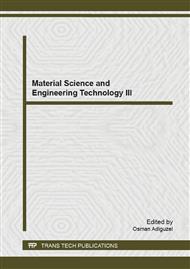p.340
p.344
p.348
p.355
p.361
p.368
p.373
p.379
p.385
Artificial Weathering Analysis and Mechanical Behavior of Geotextiles Used for Coast Erosion Control and Beach Restoration
Abstract:
Nowadays geotextiles play a significant part in coastal protection and erosion prevention design and maintenance techniques. The growth in their use worldwide as geotubes for recovering damaged coastal due to its easiness of manipulation and excellent mechanical properties has been extraordinary. Considering that applications of geosynthetics are usually outdoors, the degradation of polymers must be taken in account when selecting polymeric textiles. There are many environmental factors, which influence aging mechanisms of geotextiles such as UV radiation, temperature, humidity, etc. However, a multiple exposures, such as a combination of moisture and heat or oxygen and light, can result in accelerated deterioration. This paper is related to mechanical behavior and durability consideration that geotextiles must withstand in order to be applied as geotubes for coast erosion and beach regaining. The paper provides an overview of the current erosion in the Yucatan coast and the solutions for shoreline protection as well as the effect of geotextile architecture on mechanical properties.
Info:
Periodical:
Pages:
361-367
Citation:
Online since:
April 2015
Keywords:
Price:
Сopyright:
© 2015 Trans Tech Publications Ltd. All Rights Reserved
Share:
Citation:


